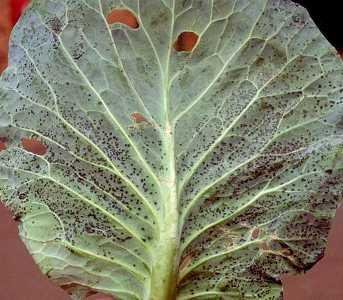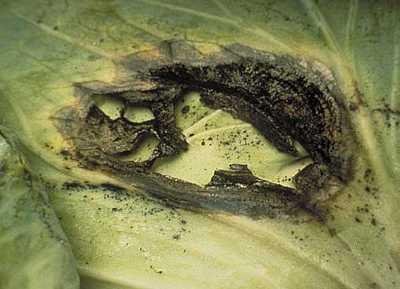Credits:Biovision-Infonet

(c) David C. Novell, Courtesy of EcoPort

(c) Gerlach W. Courtesy of EcoPort
Alternaria leaf spot or black spot is caused by the fungus Alternaria brassicae. The disease can severely damage cabbage if uncontrolled. The initial symptoms are small, circular, dark spots on older leaf surfaces. As the spots enlarge, concentric rings develop within lesions surrounded by a yellow halo. The tan-coloured centres of lesions may eventually fall out, producing a hole, or under wet conditions, may become covered with masses of black spores. In storage, spots enlarge and soft-rot bacteria may enter lesions.
The pathogen can over-season on crop debris. Weeds from the family Cruciferae may also harbour the fungus. Spores of Alternaria can be spread by wind and water. The disease is most damaging under wet, warm (20-30.5 degC) conditions.
What to do:
- Cabbage should never be grown in fields where other Brassica crops have been grown in the past 3 years.
- Always remove infected plant debris or destroy it after the season.
- Use disease-free transplants.
- Crop rotation will reduce the severity of black spot disease.
- Hot water treatment of own seed to prevent seed.